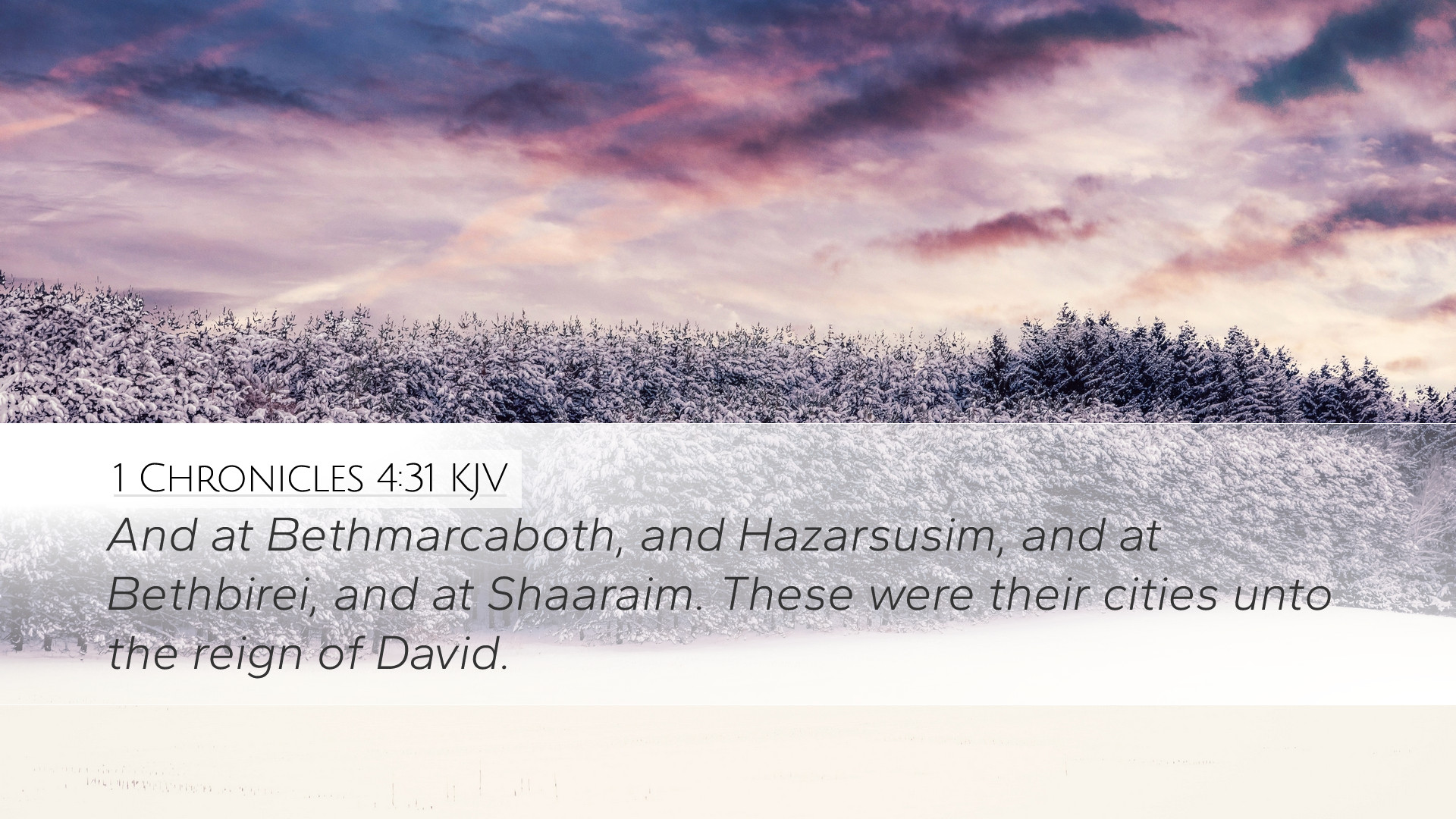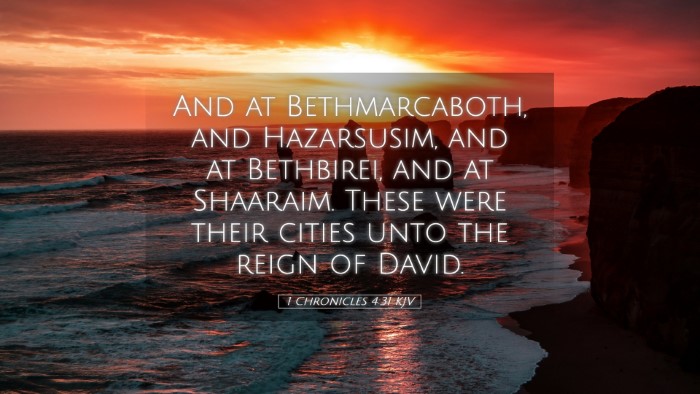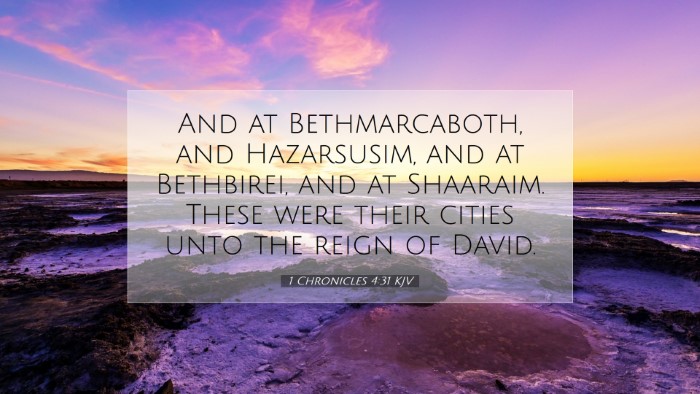Commentary on 1 Chronicles 4:31
Verse: 1 Chronicles 4:31 - "And at Beth-lehem, and the place of the woods, and at the house of Ashbea."
Introduction
The genealogies presented in 1 Chronicles serve not only to trace lineage but also to highlight key locations and significant figures within Israel's history. In particular, 1 Chronicles 4:31 brings attention to places linked with the descendants of Judah, namely Bethlehem and other associated locations. This commentary will explore the historical, theological, and practical implications of this verse.
Historical Context
The Chronicler's account seeks to remind Israel of its heritage amid post-exilic challenges. When examining the mention of Bethlehem, one must recognize its profound biblical significance as the birthplace of David and later, as prophesied in Micah 5:2, the birthplace of Jesus Christ. The locations mentioned serve as both literal and symbolic representations of God's fulfillment of promises through the lineage of Judah.
Insights from Commentaries
Matthew Henry's Commentary
Henry emphasizes the importance of genealogy in the Scriptures. He notes that the records in Chronicles were intended to encourage the returned exiles by reminding them of their distinct place in God's plan. In relation to Bethlehem, Henry asserts that the mention of such locations roots the story of Israel in real history, demonstrating God's faithfulness in preserving a remnant. He highlights that even in the seemingly mundane details of genealogies, God orchestrates redemptive history.
Albert Barnes' Notes on the Bible
Barnes focuses on the various sites mentioned in this verse. He explains that Bethlehem is known as the "house of bread," showing the abundance of God and hinting at the provision found in Christ, the Bread of Life. Furthermore, Barnes remarks on "the place of the woods," suggesting a dual meaning: it could represent a place of refuge or a realm associated with the wilderness, highlighting God’s presence in both areas of comfort and challenge. The connection to the figurative "house of Ashbea" conveys a sense of belonging, pinpointing God's people amidst the wilderness of life.
Adam Clarke's Commentary
Clarke astutely notes the cultural and societal values encapsulated in the families mentioned in the genealogies. He draws attention to the significance of Bethlehem during the time of David. Clarke elaborates on the linguistic roots of the places named, noting that Ashbea is tied to the concept of "the deliverer" or "to deliver," which alludes to God’s redemptive acts in history. As the Chronicler articulates these names, he is reminding the people of their past and instilling hope for the future through commitment to God’s covenant.
Theological Implications
This verse illustrates a deeper theological truth: God's providence and faithfulness throughout history. The naming of specific locations makes it clear that God not only works through individuals but also through history itself. He is sovereign over geography and context in fulfilling His promises. By understanding the significance of these sites, pastors and theologians are encouraged to delve deeper into the intersection of history and theology, learning to see God’s hand in every aspect of life.
Practical Applications
- Grounding Sermons in History: Pastors can use the historical context of this verse to ground their sermons, emphasizing the reliability of Scripture and God's plans throughout generations.
- Understanding Identity: For students and theologians, this verse serves as a reminder of their identity in Christ, stemming from a rich biblical heritage, urging believers to understand their role in God’s redemptive narrative.
- Encouragement from Genealogy: The genealogical records can be a source of encouragement, reminding believers that God’s plans are fulfilled through frail humanity, showcasing His grace over weaknesses.
Conclusion
1 Chronicles 4:31, though briefly touching upon the descendants of Judah, opens up profound theological vistas. The locations mentioned are steeped in rich history and divine purpose. By exploring the insights provided by public domain commentaries, we gain a fuller understanding of God’s interaction with humanity, both in ancient times and in our current walks with Him. Thus, this passage becomes a powerful reminder of God's ongoing narrative through time and invites all to participate in His story.


